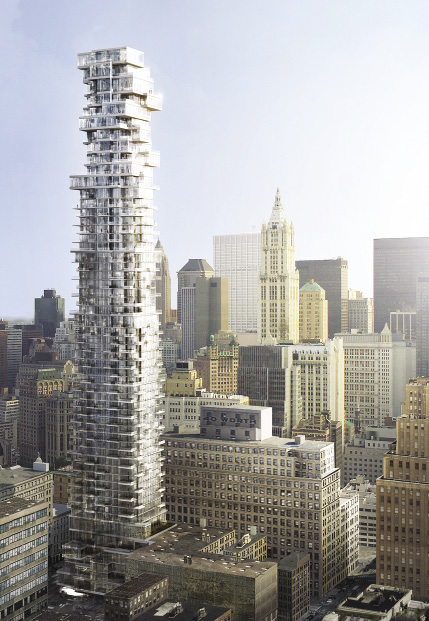


![]()
ONLINE
Alexico’s Evolution
Editors’ Note
Izak Senbahar moved to the U.S. in 1977 to attend The Catholic University of America in Washington, D.C. After graduating with a B.A. in mechanical engineering, he moved to New York, where he earned his master’s degree in finance from New York University. Before he entered the real estate market, Senbahar was a Gold Trader for the French financial firm Sucre et Denrées.
Company Brief
Based in New York, Alexico Group LLC (Alexicogroup.com) is a real estate development firm with a portfolio of projects including The Mark Hotel, The Laurel, 165 Charles Street, and 56 Leonard. Alexico Group partners, Izak Senbahar and Simon Elias, collectively have more than 50 years of experience in development, construction, ownership, and management of Manhattan real estate. They are recognized leaders in their field with a portfolio that has included some of New York’s most prestigious properties.
How is the real estate market faring today and is this a time for growth?
The New York market is stronger than 2008. The momentum in sales and the sheer sales volume has never been seen before. Real estate is one of the very few choices left for where to put your money. With interest rates being at historically low levels, keeping your money in the bank or in Treasury bonds after inflation sets you back to below zero in real interest rate terms. So if you want growth, the usual suspects are the stock market and real estate. I foresee growth in real estate.

56 Leonard
Many say that prices today are exceeding those at the height of the bubble. Are we safeguarding against another recession? Will this be sustainable?
It doesn’t look like a bubble this time around because there is limited inventory. Real estate in New York is not the type of product where you can churn out as many as you want and meet the demand. It’s a long process and there is a lot of red tape and approvals involved. Furthermore, there isn’t that much vacant land in the city.
There are also other high barriers to get in: construction loans are not easy to get unless you are financially strong; deals are not as leveraged as they used to be – you’re not getting an 80 or 90 percent construction loan but rather a 50 to 60 percent construction loan. So deals are more conservative as a result.
How has your development project 56 Leonard fared?
The momentum of 56 Leonard has taken us by surprise. We opened up sales at the end of February and we have sold $900 million of inventory in less than 16 weeks. We are 80 percent sold and I don’t think anyone has experienced that kind of momentum.
A number of years after bringing The Mark back to the market, has it garnered the attention you anticipated?
It’s a huge personal satisfaction for me to see something work after spending so much time, energy, and resources to create a luxury brand such as The Mark. Out of the best luxury hotels in New York, we had the highest occupancy in the first half of 2013. So we’re leading the pack right now. It has become the mecca for Hollywood, fashion, and business; the enormous attention we paid to it is paying off. Now that we have a proven brand, we are looking to launch in Los Angeles, Sao Paolo, and London. The Mark brand will also bring along Jean-Georges, Frederic Fekkai, Frederic Malle, John Lobb, and other brand names under one umbrella.
Are you surprised to see how certain areas of the city that were once undesirable have emerged? Will many people be priced out of this market?
Bloomberg has done a great job at raising the bar in the city – the quality of life has improved every year over the past 12 years. Every single neighborhood in the city is attractive in one way or another. It is an exciting time to be a New Yorker.
In terms of being priced out of the market, it’s a big city – there are a lot of boroughs and there is a lot of low-income and middle-income housing being built supported by many city programs that create housing. There is also a big rent-stabilized and rent-controlled inventory. It’s not at the level where I would panic.
Do you get a feel early on of the impact a property under development will have or do you need to wait until it’s completed?
The romance starts from the first day you see a piece of land. You take the land and you make a business plan out of it. Putting all of the players and pieces together – the architects and engineers, the marketing people, the designers; it’s like making a movie. You start producing the movie in your mind from the first time you lay your eyes on the site.
Is there a project that stands out in your mind as your most important?
You can’t rest and say, this is my best. You always have to improve and learn something from the last project. You need to constantly evolve.
Every project is precious and each one is like your own child. You can’t differentiate your kids and it’s the same with buildings.
How important is it that the next mayor of New York builds on the public/private partnership currently in place?
It’s like a marriage – we have to be in sync. We all have the well-being of the city in mind, from a quality of life, educational, and cultural point of view. These are concerns for both the public and private sectors. We all raise families here and we want to leave it a better place for our children.•